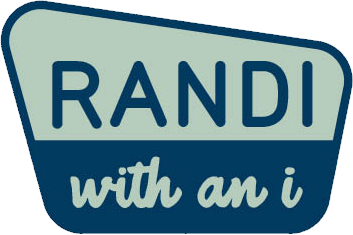You guys know I am a suuuuper organized Type A neat freak, so it really shouldn’t come as a surprise that I have the hardest time finding a daily planner.
I wrote about my struggles a little bit last year, when I picked up the Simplified Planner to use. I really liked the planner’s design at first, but it didn’t take long for the bulkiness — combined with the lack of a weekly view and the overwhelming checklist layout — to start proving its inefficiency.
So, I switched to a Plum Paper planner that had weekly views sectioned out by topic — i.e. “day job,” “freelance,” “blogging,” etc. That worked for a little bit, but lacking the space to write out appointments was really frustrating, and I also found myself overlooking tasks and due dates because the layout made it hard to separate scheduled meetings from tasks from general notes.
After hours of scouring the web looking for a suitable replacement, I gave up and made my own!

I drew inspiration from two different planner layouts: The Top Down Planner and the Planner Pad. I really liked the overall concept: A top section for weekly projects, a daily section for tasks and due dates and an hourly section to keep track of meetings.
The only problem? The Top Down planner had a split Saturday/ Sunday, and the Planner Pad didn’t start early enough for me. I work Sundays — and early at 6 a.m.! — so it’s really important to me to have a planner that treats every day of every week equally.
So, here’s the design!


The top section allows me to section off weekly projects based on topic. As you can see, I’ve got “Tribune,” “blog,” “personal” and “freelance” on there. The blank headers let me switch topics in and out every week based on what’s going on in my life, so I can add things like packing lists or shopping lists, or things I want to meal prep for the week.
Then, the middle section lets me plan hourly, for meetings and appointments.
Finally, the bottom section allows me to list out tasks, due dates (highlighted!) and reminders — like birthdays or holidays — specific to the corresponding day above.
Does that make sense? The “weekly” part works on its own to keep track of things I want to accomplish at no set point in the week, and the “hourly” and “daily” parts work in tandem.
The right sidebar of every week has space for goals. I’ve been using it to keep track of the tweets I send, but I’ve also used it to track things like reading progress and DuoLingo sessions. It also features a notes section — self-explanatory — and two monthly calendars.
Because I designed my own planner, I also took the liberty to add a few more features that cater to my specific needs!

Every month has its own “month-at-a-glance” page with two write-in calendars, space to write goals, and space to keep track of my reading list and friend birthdays/ anniversaries.
One calendar serves as my general calendar — used to note birthdays, bill due dates, trips, friend visits, etc. — and the other serves as a blog content calendar.
The cover art is just an image I took from Google, but I’d love to try my hand at designing a cover when it’s time for a reprint.
And, one of the coolest parts about self-designing a day planner? Custom quotes! I have tons from some of my favorite inspirational figures like MLK, J.K. Rowling, Barack Obama, Eleanor Roosevelt, Albert Einstein and Wayne Gretzky.

There’s also a portion in the beginning of the planner with yearly overviews of 2017 and 2018, and a space for yearly bucket list and goal items.
Overall, I’m really happy with the design! I went through several “test” pages where I carried around looseleaf pieces of paper to make sure the design worked for me before I sent it off for printing and binding in early September.
I’ve been using it since then, and it’s definitely the best day planner I’ve ever used. Of course, I might be biased!
So, for the specifics! I designed this entire thing in InDesign, using master pages. I saved the file as a PDF and emailed it over to MGX Copy for printing. I spent a good deal of time researching printing companies, and I really couldn’t find a lot of places that could cater to my requirements — pre-determined page size, spiral-bound and only a single printed copy.
I ended up stumbling upon MGX and I would highly recommend. The cover and binding isn’t as heavy-duty as I’d like, but the price for my completed planner was about $40 — and shipping was the most expensive part at about half the total bill. Considering I wasn’t ordering in bulk and has so many stringent requirements, I’d say this was a good deal.
Especially considering some day planners go for $50-plus.






